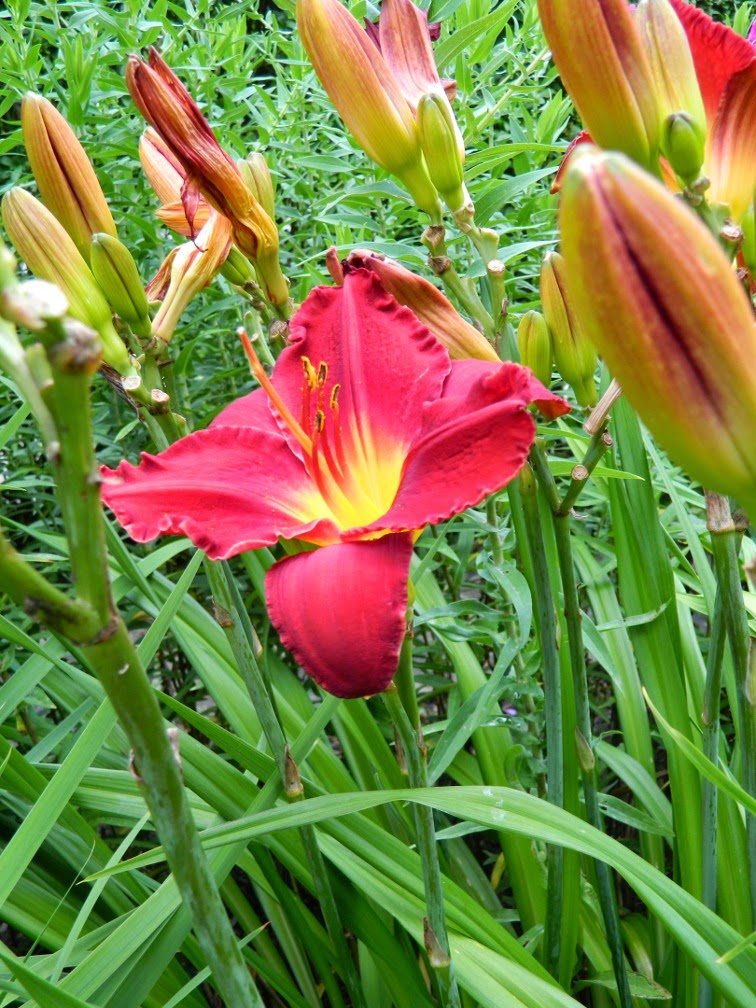A Toronto ecological-based garden: functional or ornamental? Or both?
Working around zone 5 Toronto provides an opportunity to meet different garden owners and the philosophies behind their gardens. Most have the goal of keeping traditional perennials and shrubs in their garden beds looking tidy. They're usually too busy to deal with deadheading and weeding but like flowers throughout the seasons. If not flowers, then the aim is to keep their neighbours from complaining about their gardens going to seed, literally.
On the ends of the spectrum are two individuals who are passionate about their gardens but have different ideas about what their garden and the appropriate plants should do. Specifically, will the plants:
- provide food for as many animals as possible?
- originate from the local geographic area?
- provide large and/or colourful flowers?
- provide structural interest throughout the seasons?
- need minimal to maximal amount of human care, with pruning, watering, etc?
- fit in with the neighbourhood norm?
Most of my clients have a middling perspective on the above criteria:
- they wouldn't mind having bees visit their garden, but not too many to become "bothersome"
- they don't care if the plant is a species or cultivar ("what's a cultivar?")
- flowers are nice, but I don't know/have time to deadhead
- "I like my garden to fit in with the neghbourhood and keep my neighbours happy but I want the garden to be different" (!)
Well, these two gardens I visited on the same day demonstrate almost polar views.
First, consider Carmen's ecologically-driven garden. She wants the plants to:
- feed as many birds, insects, animals as possible. (She has also set up bird feeders for this goal.)
- be native species according to expert sources
- require no supplemental watering, fertilizing, deadheading, etc.
- fit in within a natural garden design with a rain garden (fed by rain runoff from two roofs)
Here are some highlights from Carmen's garden in summer:
 |
| Showy tick trefoil (Desmodium canadense) |
 |
| Symphyotrichum ontarionis (Ontario aster) |
 |
| Jewelweed (Impatiens capensis) |
 |
| Asclepias incarnata (Pink milkweed) |
 |
| Red milkweed beetle (Tetraopes tetrophthalmus) |
 |
| Cardinal flower (Lobelia cardinalis) |
 |
| Rubus idaeus (Red raspberry) |
In contrast, Joan's garden has these characteristics:
- filled with traditional perennials associated with the English garden style (e.g., an English garden border)
- highly intensive weeding, pest control, and other maintenance requirements
- low emphasis on providing food for birds, insects and other animals
- almost exclusive focus on a succession of large colourful blooms
On this particular July day, I took these pictures from Joan's garden:
 |
| Acanthus mollis (Bear's breeches) |
 |
| Hemerocallis "Chicago Apache" daylily |
 |
| Various Summer phlox ( Phlox paniculata spp.) |
 |
| Summer blooms in the English border in front of a privet hedge |
 |
| Summer phlox paniculata and Monarda (beebalm) |
Ironically, both gardens are "out of alignment" with their respective neighbourhood's more traditional "foundation" plantings like Emerald cedars, euonymus, junipers, rhododendrons, etc. Each gardener has expert knowledge about plants and garden design, albeit (arguably) in opposite areas.
What do you think of either garden? Can the divide between "functional" and "ornamental" be bridged?
No comments:
Post a Comment